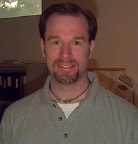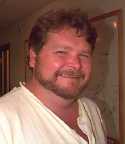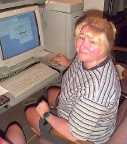Student Members of the BRAINS Center
 George B. Hunter, Dan Rogers and Joe Lyle
George B. Hunter, Dan Rogers and Joe Lyle


George, Dan, and Joe are currently using event-related potentials (ERP) to understand how activites associated with visual shifts in perception are represented by scalp potential. They are developing innovative techniques using response-locked ERP's to analyze internal, subjective changes on both the local and global levels. Additionally, both are using traditional stimulus-locked ERP's to examine the processing of figure-ground relationships utilizing a modified Flankers Task in an oddball paradigm. Analysis of these data should suggest possible mechanisms supporting phenomena explained by traditional Gestalt theory.

Chris is examining age differences in reaction times (RT's) obtained during performance of a thirteen minute continuous performance task. Linear, quadratic, and hyperbolic functions are fit to RT's in alternating blocks of trials in which participants are required to respond 20 or 80% of the time. The study is testing differential predictors derived from generalized slowing and decreased inhibition models of cognitive aging. Chris holds a Bachelor's degree in psychology from Wake Forest University.

Christin is currently performing a time-series analysis on reaction times (RT's) collected during a thirteen minute continuous performance task. Power spectral analysis of residualized RT's will be used for comparisons of healthy older adults with healthy younger adults. The purpose of the study is to examine age differences in the ability to maintain attention over an extended period of time. Christin holds a Bachelors degree in psychology from Mary Washington College.
Todd is interested in applying EEG measures to the study of Alzheimer's disease and normal aging. He is currently involved in the development of measures describing patterns of change in running EEG over time. He is also interested in identifying profiles of neuropsychological test performance in healthy older adults and persons with Alzheimer's disease. Todd graduated from Penn State University in 1997 with a Bachelors of Art in psychology.

Jane is interested in using quantitative EEG (qEEG) to help in the differential diagnosis between depression and Alzheimer's disease. She intends to examine EEG correlates of both Alzheimer's disease and depression. These correlates include recrudscence rate and logarithmic complexity as well as power spectral analysis. Additionally, she is working on gender differences in both EEG measures and performance during a sustained attention task. She will be reporting her results at the Radford University Student Research Conference in April. Jane holds a Bachelors degree in psychology from Marshall University in Huntington West Virginia.
 Christina Herden, Andi Nackley, Jason Cash and Randy Howell
Christina Herden, Andi Nackley, Jason Cash and Randy Howell
Christina Herden and Andi Nackley, first year graduate students at Radford University, in cooperation with Randy Howell and Jason Cash, seniors at Virginia Tech, are presently involved in examining localized cell activity of the rodent brain using microelectrodes. Rats are trained to use their whiskers to discriminate between rough and smooth textured discs. Following microelectrode implantation into the barrel cortex, patterns of activity among single units are recorded. Current research may also involve examining cell activity following microelectrode implantation into the hippocampus. The observed patterns of activity will aid in the understanding of how varied environmental stimulation is represented in the brain. Previous research has provided evidence that stimulation is represented as patterns accross interconnecting networks of neurons, as opposed to patterns within specific neurons.

These pages were last updated on October 8, 1996.




